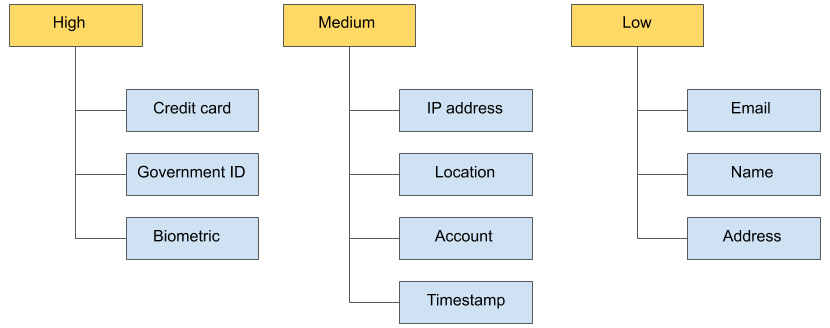Best practices for using policy tags in BigQuery
This page describes best practices for using policy tags in BigQuery. Use policy tags to define access to your data when you use column-level access control or dynamic data masking.
To learn how to set policy tags on a column, see Set a policy tag on a column.
Build a hierarchy of data classes
Build a hierarchy of data classes that makes sense for your business.
First, consider what kinds of data the organization processes. Usually there are a small number of data classes managed by an organization. For example, an organization could have data classes such as:
- PII data
- Financial data
- Customer order history
A single data class can be applied to multiple data columns using a policy tag. You should leverage this level of abstraction to efficiently manage many columns with only a few policy tags.
Second, consider if there are groups of people who need different access to different data classes. For example, one group needs access to business- sensitive data such as revenues and customer history. Another group needs access to personally identifiable data (PII) like phone numbers and addresses.
Keep in mind that you can group policy tags together in a tree. Sometimes it is helpful to create a root policy tag that contains all of the other policy tags.
The following figure shows an example taxonomy. This hierarchy groups all data types into three top-level policy tags: High, Medium, and Low.

Each of the top-level policy tags contains leaf policy tags. For example, the High policy tag contains the Credit card, Government ID , and Biometric policy tags. The Medium and Low similarly have leaf policy tags.
This structure has several benefits:
You can grant access to an entire group of policy tags at once. For example, you can grant the Data Catalog Fine Grained Reader role on the Low tier.
You can move policy tags from one tier to another. For example, you can move Address from the Low tier to the Medium tier to further restrict its access, without needing to reclassify all Address columns.
With this fine-grained access, you can manage access to many columns by controlling only a small number of data classification policy tags.
For more information about policy tags in BigQuery, see:
